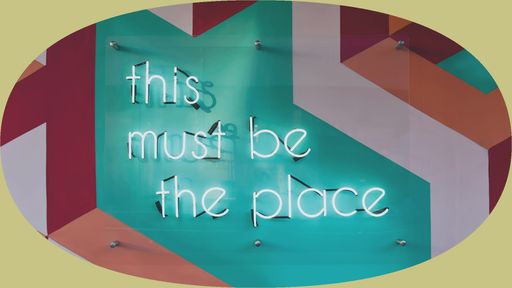Finding the Balance in Remote Work vs. On-Site Work

by Jake Safane

As much as employees and employers have recognized the positives of remote work during COVID-19—opting out of long commutes, avoiding in-office distractions, and being able to eat salmon for lunch without stinking up the break room—working from home during a pandemic doesn’t exactly track with working remotely in non-pandemic circumstances.
When the world eventually gets back to normal, whatever that is, and you have more flexibility to choose where to work (while not having to teach geometry to your kids between conference calls) there’s a good chance your views on remote work might shift toward a hybrid approach. As 2016 Gallup research found, the ideal model to maximize employee engagement involves working remotely three to four days per week, rather than all five.
Of course, much depends on the industry you’re in and how companies provide support, for example, career advancement for remote workers. But in general, many employees benefit from some in-person interaction with colleagues, and these higher levels of employee engagement can boost corporate performance, finds Gallup.
That said, the trendline points toward the effectiveness of increasing levels of remote work, due at least in part to technology improvements. Earlier research from Gallup in 2012 found workers who worked remotely less than 20 percent of the time had the highest levels of engagement. Four years later, the magic range rose to between 60 and 80 percent. Finding your optimal balance of course depends on many factors such as the type of work you perform, your personal work style, and the technology in place to support remote work.
Do Remote Workers Want to Be Remote?

For many employees, the pandemic provided their first chance to work remotely full-time. While being able to roll out of bed and into a Zoom meeting might have seemed great at first, the novelty may have worn off by now, and you could be thinking about going back in to the office.
Consider the findings of another recent Gallup poll. Of US employees polled between March 23 and March 29, 2020, toward the beginning of stay-at-home orders, 62 percent said they’d want to work remotely as much as possible once businesses and schools reopen. Yet when they were polled between April 13 and April 19, 2020, that share fell to 53 percent.
That drop certainly could be related to pandemic-specific stresses, and it still leaves significant segments of the workforce who are perfectly happy working remotely full-time. So this is a good opportunity to get introspective about what you prefer. If you didn’t work remotely before this year, try approaching your work setup with fresh eyes once the pandemic ends. In the meantime, employers need to be flexible enough to give employees autonomy to choose the work style and location that suit them individually.
As a February 2020 study by social media management platform Buffer and startup website AngelList found, the most common arrangement among surveyed remote employees is working remotely all the time. However, 43 percent work both remotely and on-site. Even with these differences, 70 percent are happy with the amount of time they spend working remotely, and 82 percent who work remotely full-time are content with this arrangement.
Keep in mind that while these findings may lean toward supporting full-time remote work more than the Gallup employee engagement research, comparing head-to-head can be apples and oranges. Employees might report being happy with the amount of time they spend remote, but that doesn’t necessarily line up perfectly with how engaged they would be if they had a little more face time. You might be happy eating cake but perhaps would be more engaged if you baked one from scratch, in your kitchen, with friends.
But no matter their work arrangement, remote workers almost universally support remote work in some configuration. Specifically, the Buffer/AngelList survey shows that 98 percent of remote workers want to work remotely in some capacity for the rest of their careers, and 97 percent would recommend it to others.
Embracing the New Normal of Remote Work
Based on the relative success of remote work during COVID-19, many companies likely will make remote work more the norm. As an April 2020 survey by freelance platform Upwork finds, nearly two-thirds of hiring managers say more of their workforce will be remote due to their experiences during the pandemic.
The question, however, is whether employers will allow employees to choose what’s comfortable for them and work with employees to find the optimal balance.

Project management software company Basecamp, for example, still maintains a Chicago headquarters but lets employees work from anywhere, even though they’ll be missing out on deep-dish pizza and hot dogs topped with pickles and tomatoes if they leave the Windy City. Basecamp even offers a coworking stipend for those who want to work remotely, for example, if they want to live in a different city than headquarters but don’t want to work alone in their house. This type of geographic and financial flexibility goes a long way toward increasing engagement, considering that a top challenge remote workers face is loneliness, according to the Buffer/AngelList survey.
Industry stalwarts like Dell also support flexible arrangements, giving employees the leeway to choose from options such as full-time remote, job sharing, or reporting to an office on certain days of the week. According to Dell, 94 percent of employees say flexible work arrangements contribute to positive company performance.
See How Flexible Work Arrangements Work for You
Even though technology increasingly makes remote work possible and companies may have experienced positive effects during stay-at-home orders, both employees and employers should be mindful of what works best for them and see how remote work feels in more normal circumstances. Whether you’re an employer or an employee, you should take time to assess different models before drawing conclusions or rushing into new paradigms.
For managers, seeking consistency—shifting fully to remote work or bringing everyone back into the office—may be your initial reaction, but evidence from Gallup and others points to the advantages of flexible arrangements. See what level of remote and on-site work your employees prefer, using tools like Culture Amp to evaluate how different arrangements affect engagement. And maybe you can bring some of the perks of working from home into your office; pajamas may not work, but jeans and T-shirts could.
For employees, be honest with yourself and with your employer about what setup works best. Maybe you’re the type of person who works best from home 100 percent of the time, maybe you need to work on-site one to two days per week, or maybe you need a coworking space to have the flexibility to live anywhere while still communing in person with other professionals. Finding the right balance can go a long way toward supporting your job performance and overall personal satisfaction.









